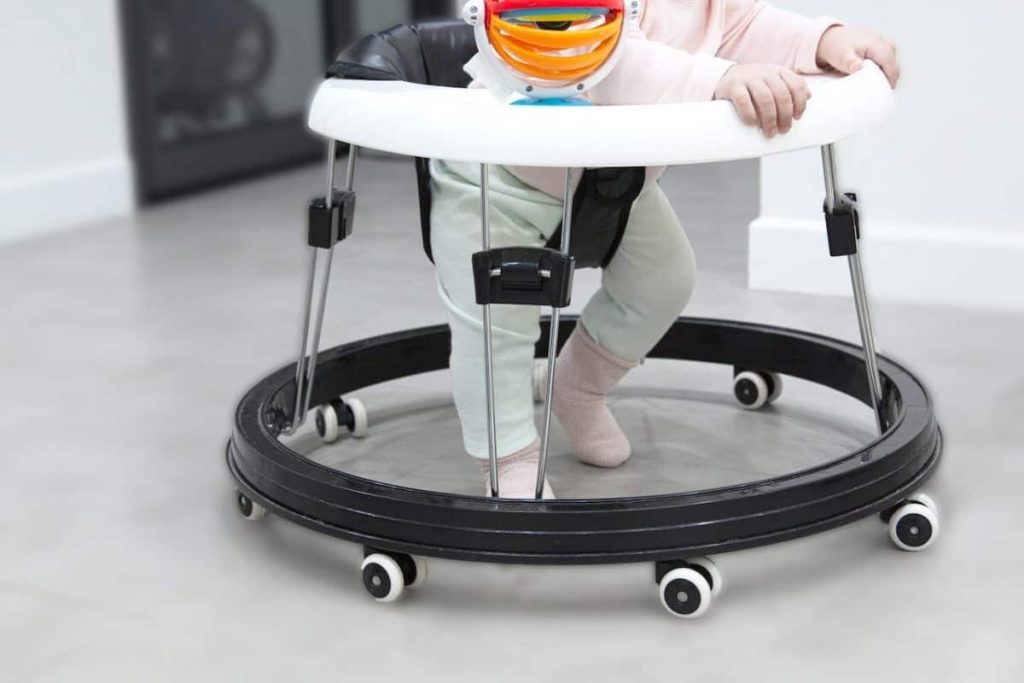A Baby walker! Should I purchase it?
Your baby’s first steps are so essential and have such an emotional impact on parents that many consider purchasing a walker for their children to help them take their first steps and to watch their children play around them every day. Is the baby walker, however, genuinely safe? I am sorry to tell you that it is not safe! It is directly related to many musculoskeletal and joint problems and many accidents such as falls from stairs, head injuries, burns and fractures. It can also cause a delay in the development of the child. Finally, even its primary function is not being performed correctly because it causes a child to walk on their toes which may continue when children walk without it. All this encouraged some countries to ban them permanently. Most popular baby walker myths First: The baby walker is a safe place to put my baby for a few minutes! The truth is that putting a baby in a baby walker is very risky. The baby in the baby walker needs great attention and supervision; They allow children to move very quickly and reach a height where they can reach dangerous items such as knives or hot drinks. Second: Using a baby walker will help my child learn to walk. The fact is that there are strong links between the amount of baby walker use and the extent of developmental delays. Third: It will help your child’s development. The truth is that it causes your child’s growth retardation! Children who used a walker sat, crawled, and walked later than those who did not. Fourth: It will strengthen my child’s legs. In fact, a walker can lead to long-term changes in a child’s walking pattern and can cause hip problems in the long run. The baby walker also teaches children to run on the ground using their toes and this strengthens the wrong muscles in the legs. This can have a significant impact on balance and overall muscle and joint development, including long-term foot and ankle problems. Encourage your child to play without it Give time for your infant to grow strong muscles. Babies walk when they are ready, which is generally between the ages of 9 and 18 months. Keep in mind that using a baby walker wastes your child’s time and diverts him from things that will help him walk. So: Let your child play on his tummy on the floor. The time it takes for your baby to play on his tummy is the basic building block for all motor skills and a lack of this time can affect him greatly. Encourage him to turn around and sit down. Motivating him to crawl and push himself to stand. If you have wooden floors, lay a large, non-slip rug or rug on the floor so your child can grab onto each other. These activities will help your child to: Learn about his body Explore around Progress in walking What if? However, if you are considering purchasing a baby walker: Limit use to 10 minutes per day Watch your child closely at all times Make sure the walker is low enough that your baby can put both feet completely flat on the ground. If only his toes are touching the ground, wait until your baby is a little older.
A Baby walker! Should I purchase it? Read More »



